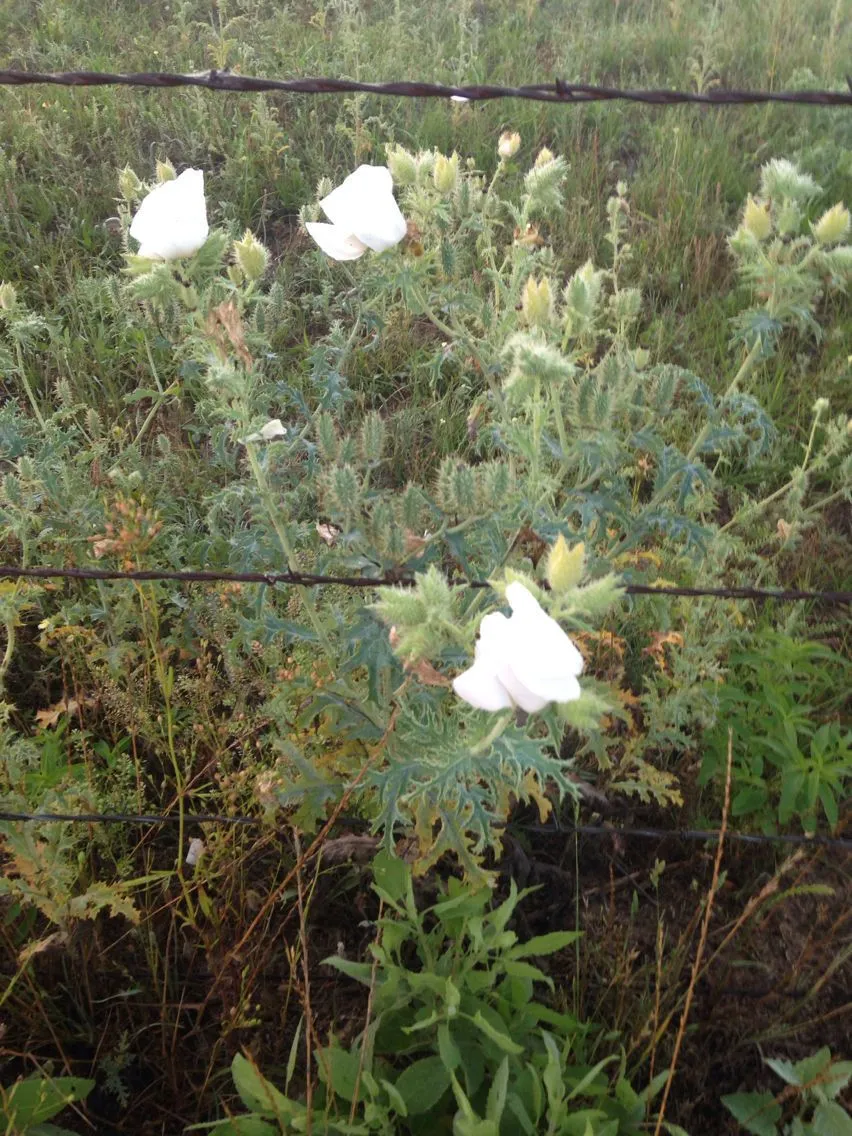
Author: Hornem.
Bibliography: Hort. Bot. Hafn. 2: 469 (1815)
Year: 1815
Status: accepted
Rank: species
Genus: Argemone
Vegetable: False
Observations: SE. U.S.A. to E. Texas
The Bluestem pricklypoppy, known scientifically as Argemone albiflora, is a distinctive and notable plant native to the southeastern United States, extending towards eastern Texas. Originally described in 1815 by Hornem. in “Hortus Botanici Hafniensis” (Vol. 2, p. 469), this species belongs to the family Papaveraceae, which is widely recognized for its showy and often brightly colored flowers.
Argemone albiflora thrives in open, often disturbed sites such as roadsides, fields, and grassy areas, where its striking white blooms can be readily spotted. The plant is well-adapted to the climatic conditions of its native range, which includes regions of high humidity and sandy to loamy soils. Its hardy nature allows it to flourish in environments where other plants may struggle, showcasing robust resilience.
One of the most distinguishing features of the Bluestem pricklypoppy is its flowers. They are large and conspicuous, generally pure white with a central cluster of bright yellow stamens that create a striking contrast, drawing the eye and attracting pollinators. The leaves and stems of the plant are also noteworthy for being covered in prickles, giving it a somewhat formidable appearance and an added layer of protection against herbivores.
Culturally and ecologically, Argemone albiflora holds significance in its native region. The plant serves as a critical source of nectar and pollen for various pollinators, including bees and butterflies, contributing to the biodiversity and health of the ecosystem. Additionally, the presence of pricklypoppy fields adds to the scenic beauty of the countryside, especially during the blooming season when the white flowers create a picturesque landscape.
Argemone albiflora propagates primarily through seed dispersal. The seeds are housed in capsules that split open when mature, releasing numerous small seeds that can remain viable in the soil for extended periods. This propagation strategy ensures that the Bluestem pricklypoppy can quickly colonize areas that have been cleared or disturbed, such as fields left fallow or roadsides after maintenance work.
In summary, the Bluestem pricklypoppy (Argemone albiflora) is a resilient and visually captivating member of the Papaveraceae family. Its native range in the southeastern United States to eastern Texas underscores its adaptability to diverse environmental conditions, while its striking white flowers and prickly foliage make it a plant of both ecological importance and aesthetic appeal.
Eng: bluestem pricklypoppy
En: Bluestem pricklypoppy, Bluestem prickly poppy, Carolina poppy, White prickly poppy
Ar: أرجمون أبيض الأزهار
Hy: Արգեմոնե սպիտակ
Zh: 白蓟罂粟
Zh-tw: 白薊罌粟
Taken Jul 18, 2022 by Quinn Anderson (cc-by-sa)
Taken Jun 14, 2022 by drew mills (cc-by-sa)
Taken Oct 22, 2021 by Candace Eich (cc-by-sa)
Taken Aug 10, 2015 by EOL − Paula Savage (cc-by-nc)
Taken May 8, 2020 by kayla ludy (cc-by-sa)
Taken May 10, 2020 by Burns Francis (cc-by-sa)
Taken Jul 1, 2007 by EOL − Ron Thomas (cc-by-nc)
Taken Jan 3, 2020 by Fernando Carrillo (cc-by-sa)
Taken Jul 29, 2020 by Christian Stafford (cc-by-sa)
Taken Jul 18, 2022 by Quinn Anderson (cc-by-sa)
Taken Jan 3, 2020 by Fernando Carrillo (cc-by-sa)
Taken Jul 29, 2020 by Christian Stafford (cc-by-sa)
Taken Jun 1, 2015 by EOL − Erin Taylor (cc-by-nc)
Taken Jul 27, 2015 by EOL − brookesmith (cc-by-nc)
Taken Apr 9, 2015 by EOL − timarcus (cc-by-nc)
Taken May 30, 2014 by EOL − timarcus (cc-by-nc)
Taken Jul 27, 2015 by EOL − brookesmith (cc-by-nc)
Taken Apr 9, 2015 by EOL − timarcus (cc-by-nc)
Taken Apr 9, 2015 by EOL − timarcus (cc-by-nc)
Taken Jul 27, 2015 by EOL − brookesmith (cc-by-nc)
Taken Aug 15, 2021 by ajcrvpt (cc-by-sa)
Taken Jul 27, 2007 by EOL − Ron Thomas (cc-by-nc-sa)
Taken May 13, 2014 by EOL − Linda Jo Conn (cc-by-nc)
Taken Jun 1, 2015 by EOL − Erin Taylor (cc-by-nc)
Growth habit>: Forb/herb
Family: Myrtaceae Author: (F.Muell.) K.D.Hill & L.A.S.Johnson Bibliography: Telopea 6: 402 (1995) Year: 1995 Status:…
Family: Rubiaceae Author: Pierre ex A.Froehner Bibliography: Notizbl. Bot. Gart. Berlin-Dahlem 1: 237 (1897) Year:…
Family: Sapindaceae Author: Koidz. Bibliography: J. Coll. Sci. Imp. Univ. Tokyo 32(1): 38 (1911) Year:…
Family: Asteraceae Author: A.Gray Bibliography: Pacif. Railr. Rep.: 107 (1857) Year: 1857 Status: accepted Rank:…
Family: Fabaceae Author: Medik. Bibliography: Vorles. Churpfälz. Phys.-Ökon. Ges. 2: 398 (1787) Year: 1787 Status:…
Family: Aspleniaceae Author: (Cav.) Alston Bibliography: Bull. Misc. Inform. Kew 1932: 309 (1932) Year: 1932…